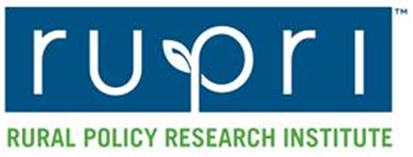- CMS: Medicare and Medicaid Programs: CY 2026 Payment Policies Under the Physician Fee Schedule and Other Changes to Part B Payment and Coverage Policies; Medicare Shared Savings Program Requirements; and Medicare Prescription Drug Inflation Rebate Program
- Public Inspection: CMS: Medicare and Medicaid Programs: CY 2026 Payment Policies under the Physician Fee Schedule and Other Changes to Part B Payment and Coverage Policies; Medicare Shared Savings Program Requirements; and Medicare Prescription Drug Inflation Rebate Program
- CMS: Medicare Program; Implementation of Prior Authorization for Select Services for the Wasteful and Inappropriate Services Reduction (WISeR) Model
- Public Inspection: CMS: Medicare Program: Implementation of Prior Authorization for Select Services for the Wasteful and Inappropriate Services Reduction Model
- CMS: Secretarial Comments on the CBE's (Battelle Memorial Institute) 2024 Activities: Report to Congress and the Secretary of the Department of Health and Human Services
- HHS: Patient Protection and Affordable Care Act: Marketplace Integrity and Affordability
- Public Inspection: HHS: Patient Protection and Affordable Care Act: Marketplace Integrity and Affordability
- Increased Risk of Cyber Threats Against Healthcare and Public Health Sector
- HRSA Announces Action to Lower Out-of-Pocket Costs for Life-Saving Medications at Health Centers Nationwide
- Announcing the 2030 Census Disclosure Avoidance Research Program
- Eight Hospitals Selected for First Cohort of Rural Hospital Stabilization Program
- CMS: Medicare Program; Hospital Inpatient Prospective Payment Systems for Acute Care Hospitals and the Long-Term Care Hospital Prospective Payment System and Policy Changes and Fiscal Year 2026 Rates; Requirements for Quality Programs; and Other Policy Changes; Correction
- CMS: Medicare Program; Hospital Inpatient Prospective Payment Systems for Acute Care Hospitals and the Long-Term Care Hospital Prospective Payment System and Policy Changes and Fiscal Year 2026 Rates; Requirements for Quality Programs; and Other Policy Changes; Correction
- CMS: Medicare and Medicaid Programs; Contract Year 2026 Policy and Technical Changes to the Medicare Advantage Program, Medicare Prescription Drug Benefit Program, Medicare Cost Plan Program, and Programs of All-Inclusive Care for the Elderly; Correction
- CMS: Medicare and Medicaid Programs; Contract Year 2026 Policy and Technical Changes to the Medicare Advantage Program, Medicare Prescription Drug Benefit Program, Medicare Cost Plan Program, and Programs of All-Inclusive Care for the Elderly; Correction
Pennsylvania Announces Partial Implementation of Interstate Nurse Licensure Compact
The Pennsylvania Department of State is pleased to announce that Pennsylvania will take a big step by partially implementing the interstate Nurse Licensure Compact, an agreement among 41 states and U.S. territories and administered by National Council for State Boards of Nursing, that recognizes the practicing privileges for nurses licensed under the compact.
Starting Sept. 5, 2023, registered nurses (RNs) and licensed practical nurses (LPNs) who hold multistate licenses through the compact will be permitted to practice in the commonwealth without obtaining a Pennsylvania license. This step should help ease Pennsylvania’s severe nursing shortage, alleviate burdens on overworked nursing staffs, make conditions safer for both patients and healthcare workers, and increase patients’ access to in-person and telehealth care.
A November 2022 industry survey by The Hospital and Healthsystem Association of Pennsylvania showed vacancy rates of 30% for RNs providing direct care, and it cited a U.S. Health Resources and Services Administration report projecting that, by 2030, demand for LPNs in Pennsylvania will exceed the number of available workers by 27.8%.
The Department of State continues to work diligently with its state and federal partners to satisfy the preconditions necessary to allow the State Board of Nursing to issue multistate licenses to Pennsylvania nurses who want to be able to practice in compact member states.
Among the preconditions we must meet is being able to certify to other compact states that Pennsylvania’s State Board of Nursing has performed an FBI criminal background check on Pennsylvania applicants, a process that requires FBI authorization. The Department of State is actively seeking this authorization and is awaiting a response.
Meanwhile, we are ensuring that Pennsylvania meets other technical and regulatory requirements so that the commonwealth can fully implement the compact as quickly as possible once we receive FBI and statutory approval to access the FBI’s criminal background database.
We will keep you informed of our progress in achieving this crucial second step toward full implementation of the compact.
For answers to frequently asked questions about how the compact affects in-state and out-of-state nurses, as well as Pennsylvania patients, visit the State Board of Nursing’s webpage.
To learn more about the compact, visit nursecompact.com or email nursecompact@ncsbn.org.
Crest and Oral-B Launch Communications Campaign
Crest and Oral-B have launched their latest #ClosingAmericasSmileGap campaign focusing on oral care supplies for back-to-school for students. For every Crest or Oral-B product purchased from August 1st to September 30th, Crest and Oral-B will donate oral care supplies to a child in need.
To underscore the critical need for oral healthcare among these communities, Crest and Oral-B have released a “U.S. Kids’ Oral Health Report Card” that sheds light on the shocking discrepancies in access, affordability, and education between low and high-income families in the U.S.
Click here for more information.
Click here to view the report card.
Funding Opportunity! Pennsylvania Oral Health Plan Mini-Grants

PCOH is requesting proposals for the 2023-2024 Oral Health Plan Mini-Grant Program. The purpose of this program is to facilitate the implementation of the goals and recommendations of the 2020-2030 PA Oral Health Plan, as well as to advance the oral health of all Pennsylvanians. Requests may not exceed $4,000.
Applications are due by September 29th at 5 pm.
Click here to view the guidelines.
Click here to apply.
Funding for this project is through the Pennsylvania Department of Health through Centers for Disease and Prevention (CDC) of the U.S. Department of Health and Human Services (HHS) under the Preventive Health and Health Services Block Grant. This information or content and conclusions are those of the author and should not be construed as the official position or policy of, nor should any endorsements be inferred by CDC, HHS or the U.S. Government.
PA Data Center Provides Census Bureau Updates and More

2023 Metropolitan Statistical Areas (MSAs)
The Office of Management and Budget (OMB) released the Revised Delineations of Metropolitan Statistical Areas, Micropolitan Statistical Areas, and Combined Statistical Areas, and Guidance on Uses of the Delineations of These Areas. Click here to view the bulletin.
The OMB Bulletin uses OMB’s 2020 Standards for Delineating Core Based Statistical Areas. It is also the first delineation to use the 2020 Decennial Census, American Community Survey, and Census Population Estimates Program data.
2030 Census
Planning for the 2030 Census – the 25th in U.S. history – is underway. To develop the operational design, the U.S. Census Bureau will factor in past census experiences, your feedback, and new research. They will also consider evolving technologies and the changing world around us. The Census Bureau also released an updated timeline showing the lead-up to the 2030 Census. Click here to learn more.
New Report on Aging Veterans
A new report released by the U.S. Census Bureau shows U.S. veterans 65 years or older were less likely to be at risk of experiencing social isolation than other older adults. The report, Aging Veterans: America’s Veteran Population in Later Life, examines characteristics of the nation’s 8.1 million veterans ages 65 or older in 2021.
New Policy Brief Analyzes Medicare Advantage Participation Across Geographies

New from the RUPRI Center for Rural Health Policy Analysis
Distributional Analysis of Variation in Medicare Advantage Participation Within and Between Metropolitan, Micropolitan, and Noncore Counties
Dan Shane, PhD; Ufuoma Ejughemre, MD, MSc; Fred Ullrich, BA; Keith Mueller, PhD
This policy brief uses county-level information from 2017-2022 on population and MA plans to analyze relative MA participation rates by geographic classification. We use Urban Influence Codes to split counties into metropolitan, micropolitan, and noncore categories. Within each geographic classification, we order counties into quintiles by MA penetration rate (MA enrollees / Medicare-eligible enrollees) with the lowest 20% of county penetration rates comprising the first quintile. We find consistent growth in the median number of plans and median enrollment across all geographic classifications and all quintiles between 2017 and 2022, with slightly higher growth in micropolitan and noncore counties. We also find that growth rates were consistently higher in the lowest quintiles (lowest penetration rates) in each geographic classification. However, the absolute differences in median number of plans and median enrollment between these lowest-ranked counties and higher ranking counties in MA participation remained the same.
Key Findings
- From 2017 through 2022, growth (measured as percent increase) in the number of MA plans and MA enrollment rates was higher in noncore and micropolitan counties than in metropolitan counties, but metropolitan enrollment rates remained higher than nonmetropolitan enrollment rates. The median number of MA plans in metropolitan counties is higher than that in micropolitan counties which is higher than the median number of plans in noncore counties.
- Within each rural-urban classification, percent growth in MA penetration rates, plans, and enrollment has been highest in counties with the lowest participation rates in 2017.
Population size is closely tied to higher participation rates both within and across geographic classifications, with the important caveat that micropolitan and noncore counties with higher MA participation exceed rates that population only would suggest.
Click here to read the full report.
CMS Releases Inflation Reduction Act First Anniversary Fact Sheet

The Centers for Medicare & Medicaid Services (CMS) released an Inflation Reduction Act First Anniversary Fact Sheet. The fact sheet provides a summary of the milestones that CMS has met for implementing the provisions of the Inflation Reduction Act, which was signed into law on August 16, 2022.
The CMS Inflation Reduction Act Anniversary Fact Sheet is available here: https://www.cms.gov/newsroom/fact-sheets/anniversary-inflation-reduction-act-update-cms-implementation.
If you have any questions, please contact the CMS Office of Legislation.
New Report Highlights the Need for More Investments for Pennsylvania Children Birth to Age-5

A coordinated early care and education system ensures infants, toddlers, and preschoolers succeed in school and allows parents to work while knowing their children are safe and learning in high-quality care. Yet, inequities exist, causing too few children to have access and a historic early learning workforce shortage, as shown in our first-ever State of Early Care and Education report.
Working with Pre-K for PA and Start Strong PA as part of Early Learning Pennsylvania (ELPA), a statewide coalition of advocates focused on supporting young Pennsylvanians from birth to age five, the report uses data and research to show that without new investments in the child care workforce, Pre-K Counts, or the Head Start Supplemental Assistance Program, early learning providers will continue to lose teachers and close classrooms.
The growth and development of young children in high-quality early care and education is the start of a continuum with benefits that last into adulthood. Providing every child—regardless of race, ethnicity, geography or income—access to high-quality early care and education programs ensures an equitable start to their academic careers.
A coordinated child care system serving infants and toddlers is vital to the economy, allowing parents to work while knowing their children are safe and learning in high-quality care.
According to the report, inadequate funding for the child care system has led to issues of supply and demand that impact a family’s ability to find affordable, high-quality child care, and child care providers’ ability to be compensated fairly to pay their teachers and maintain business expenses:
- Unlivable wages of less than $12.50/hour are causing a historic workforce shortage that is closing classrooms and driving up wait lists for working mothers and families.
- Child care providers can’t raise teacher wages because families are already struggling to afford the costs of care. On average, costs for infant child care comprise approximately 17.5% of the Pennsylvania median family income.
- Only 21% of eligible children under three are served by Child Care Works, leaving over 83,000 eligible infants and toddlers unserved.
The next step in the academic continuum for children is access to high-quality pre-k programs, but only 43% of eligible 3- and 4-year-olds participate in high-quality, publicly funded pre-k, leaving over 87,000 without access to a high-quality program.
The workforce is essential for delivering high-quality pre-k. Yet, while the level of quality expects and demands the appropriate knowledge and credentials of professionals, the compensation for pre-k teachers remains significantly lower than their colleagues in K-12 settings.
Unlike child care, publicly funded pre-k programs in Pennsylvania rely on annual state budget funding appropriations. High-quality pre-k has historically been a consensus issue, aligning political parties and enjoying a decade of growing investment. However, policymakers have flat-funded pre-k in the 2023-24 state budget, which is baffling.
The report shows inequitable access to early care and education opportunities for children in Pennsylvania:
- As of March, only 1 in 4 income-eligible infants, toddlers, and preschoolers who are Black, Indigenous, and children of color participated in Child Care Works, with only 40% enrolled in a high-quality child care program. Of the 12% of income-eligible non-Hispanic white infants, toddlers, and preschoolers participating in Child Care Works, 51% were enrolled in a high-quality child care program.
- Only 23% of all children served in Pre-K Counts and Head Start Supplemental Assistance Programs in Pennsylvania are Non-Hispanic Black, compared to 41% of children identifying as Non-Hispanic White.
- Researchers at Penn State University found white preschoolers accounted for the majority of program participants in Pre-K Counts, and white children were increasingly more likely to be enrolled in a high-quality pre-k program compared to Black children. Recommendations from the report specifically called for Pennsylvania to increase funding for pre-k access and to serve more Black children from urban and high-poverty communities.
And compared to the K-12 and post-secondary education systems, the sector is the most diverse yet the lowest paid.
- Racial disparities exist within the professional child care sector, with Black educators earning approximately 2% less than their white counterparts. Hispanic educators earn approximately 5% less than white educators, exacerbating the already low wages of the sector and deepening inequities and gaps in pay.
- There is a pay gap between pre-k and kindergarten teachers, but an even larger wage gap between Black and non-Black educators. A $1/hour wage gap exists between Black and non-Black teachers at the preschool level.
The evidence is clear that access to a high-quality early care and education system positively impacts the lives of Pennsylvania children. Unfortunately, the state is falling short for children, families and providers across the commonwealth. Comprehensive policy solutions and increased investments are needed to change the system’s trajectory. Working together, we can build Pennsylvania’s early care and education system as a leading model.
How Dental Health Affects Overall Health at Every Age
 The CareQuest Institute for Oral Health released a new infographic and video summarizing the connection between dental health and overall health. The resources cover the specific connections during pregnancy/postpartum, childhood, adolescence, young adulthood, middle age, and older adulthood.
The CareQuest Institute for Oral Health released a new infographic and video summarizing the connection between dental health and overall health. The resources cover the specific connections during pregnancy/postpartum, childhood, adolescence, young adulthood, middle age, and older adulthood.
Click here to view the infographic.
Click here to watch the video.
Oral Health Equity Research Award Funding Opportunity Announced
The American Association for Dental, Oral, and Craniofacial Research and the Delta Dental Institute are now accepting applications for the second annual Oral Health Equity Research Award. This award supports research that advances recommendations for greater oral health equity in populations that lack access to dental care or improves oral health literacy for underserved populations. Submissions must represent original research that addresses social determinants of health and oral health disparities, and promotes oral health equity in the areas of access to care or oral health literacy. Two grants will be awarded at $25,000 each. Applications are due before October 17.
Pennsylvania Broadband Development Authority Approves Comprehensive Five-Year Action Plan To Expand Access Across the Commonwealth
After meeting with hundreds of Pennsylvania residents, businesses and industry partners, PBDA incorporates feedback and finalizes plan to expand broadband infrastructure using $1.16 billion in federal funding
Pennsylvania Broadband Development Authority (PBDA) Executive Director Brandon Carson announced the approval of the five-year action plan to expand internet access across the Commonwealth using $1.16 billion in funding through the federal Broadband Equity, Access, and Deployment (BEAD) Program. Governor Josh Shapiro recently announced the Commonwealth’s BEAD allocation as part of President Biden’s “Internet for All” initiative. Shaped by feedback from Pennsylvanians, the BEAD five-year action plan is now with the National Telecommunications and Information Administration (NTIA) for approval.
The PBDA’s findings encouraged collaboration across the Commonwealth through direct engagement with residents, businesses, and industry partners and the plan was developed with input from 21 community conversations across the state and more than 500 participants. Three roundtable sessions gathered feedback from digital equity stakeholders, workforce development professionals, and internet service providers. The Five-Year Action Plan also includes a survey that collected 5,920 responses in-person and online in several different languages and a public comment period that ran from July 26th through August 8th yielded 526 comments on the draft Action Plan. Together, this public feedback will allow the Commonwealth to drive out resources in an affordable and equitable way for all Pennsylvanians.
“Everyone in the Commonwealth should have access to affordable, high-speed internet,” said Executive Director Carson. “There are more than 276,000 Commonwealth households without internet access and over 52,000 without reliable access. The adoption of this plan puts us another step closer to making sure every Pennsylvanian has access to reliable, high-speed internet. Under the leadership of Governor Shapiro, we look forward to connecting communities across the Commonwealth.”
Since day one, Governor Shapiro has said extending and expanding access to broadband across the Commonwealth and making connections more reliable and affordable for Pennsylvanians is a top priority of his Administration. Just last month, Governor Shapiro announced that the Commonwealth will receive $1.16 billion in federal funding to extend broadband infrastructure to communities that currently lack reliable, affordable, high-speed internet access in order to connect Pennsylvanians and ensure they can go to school, start and grow businesses, and access telemedicine no matter where they live.
Following NTIA approval, the PBDA plans to begin awarding BEAD subgrants to approved, eligible applicants in 2024. The plan is a critical step toward achieving universal, affordable broadband access that meets and exceeds federally defined broadband speeds across the commonwealth.
The Five-Year Action Plan identifies expected obstacles to full deployment and discusses various implementation strategies. Additionally, it details how PBDA will work with a myriad of partners with the shared goals of improving digital access, generating equity, removing obstacles and barriers, acquiring digital skills and devices, fostering resilience, and enriching the benefits of connectivity.
The Broadband Equity, Access, and Deployment Program (BEAD) requires the Five-Year Action Plan be submitted to the National Telecommunications and Information Administration (NTIA) on August 12th for its approval. BEAD also requires a Digital Equity Statewide Plan, which is currently under development as well. As the PBDA awaits NTIA’s approval on the Five-Year Action Plan, the public involvement process continues with additional community conversations, focus groups, and the online survey. These additional public involvement efforts will continue to inform the Digital Equity Statewide Plan. The Five-Year Action Plan aligns its Goals and Objectives with the Digital Equity Plan to produce sustainable outcomes and a long-term solution to lack of high-speed connectivity and access to literacy programs and devices.
The Shapiro Administration is dedicated to expanding broadband access across the state Gov. Shapiro recently travelled to Beaver and Luzerne counties to emphasize the importance of expanding broadband infrastructure across Pennsylvania.
Visit the PBDA’s website to learn more about its work to close the digital divide in the Commonwealth.
For more information about the Department of Community and Economic Development, visit DCED website, and be sure to stay up-to-date with all of our agency news on Facebook, X, and LinkedIn.
